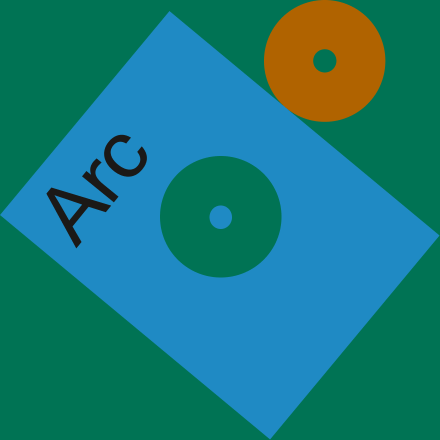Bending the Arc: Founders Share Their Journeys
As we close out the latest session of Arc, Sequoia’s catalyst for pre-seed and seed-stage founders, three alumni reflect on what brought their companies to this moment—and what comes next.
Last week, we were thrilled to welcome the second cohort of Arc Europe to our Menlo Park office for the culmination of their seven-week company design curriculum. As they prepared to present their company stories to our community of partners, founders, customers and talent, we sat down with a few founders from the group—Anant Kapoor and Eric Daoud Attoyan of Guided Energy and Samuel Colvin of Pydantic—to talk about the journey of building their companies, including through Arc itself.
Tell us about the problems you’re solving, and the journey to creating your companies.
Anant: We’re building a platform to help fleets operate electric vehicles. Because of regulation and other incentives, there’s a huge push right now toward EVs, and companies are setting ambitious targets for decarbonization. But at the operations level, things are breaking down. Fleet managers suddenly have to deal with fluctuating grids, variable pricing, and nonlinear battery curves that change based on demand and location and weather. Their legacy systems just don’t work, and they end up with higher costs and lower per-vehicle revenue than they expected.
I’d built software for fleets and seen those struggles firsthand. Then Eric and I met at Entrepreneur First in Paris, and we had a hunch that the research he was doing could help.
Eric: Right—my background is in data science and machine learning, and before Guided Energy I’d gone back to academia and done a PhD applying ML to oncology care. I knew I wanted to work on climate change because it’s one of the biggest challenges we face. Anant and I realized if we combined his knowledge of EV fleets with my resource allocation and optimal transport algorithms, we could accelerate the transition to electrification.
Samuel: Pydantic started as an open-source data validation library, and earlier this year we launched a company to build great cloud services. Our founding principle is that the right interface—whether it’s an API, or UI, or even a language—solves a whole host of problems before they occur. By putting developer experience at the center of what we build, we can create a better experience for everyone.
I’ve always been interested in entrepreneurship—I ran a startup previously—and I’d love to pretend I had this grand vision ever since the Pydantic open source package launched in 2017. But the reality is, this wasn’t my plan. I thought I’d release v2 and then go start a company around a different idea that was also close to my heart. The irony is that as David, Adrian and I have started to work out exactly how we want to build Pydantic, what’s bubbled to the top actually has a lot in common with that other idea. It’s funny how these things circle around.
What has the journey through Arc been like?
Samuel: I knew participating in Arc would be a time commitment, and initially I was nervous about that. I have a young daughter, and my partner is also starting a company, so she’s extremely busy. The team is busy, too. But I’m now a complete convert and very glad we did it, even as someone with prior experience running a company.
Arc coincided perfectly with our process of exploring what to build, which culminated in a user survey that has been enormously valuable. We got the idea from Karri Saarinen, the CEO of Linear, who we visited during Week 4 of Arc in Helsinki; their team had sent some similar questions to a list of early users. We didn’t have a clue how people would react, and it’s been great to see the community’s response—especially because the idea that’s been most popular definitely wasn’t what we thought we’d build first.
I’ve also met lots of inspiring people in this cohort, and made some valuable connections. Eric, for example, helped us with his opinions on technical issues, and also introduced us to some people who we interviewed and who took the survey.
Eric: We’ve had a very similar experience in some ways; so many things we thought we knew about our company have been challenged during Arc. When it started, we were pretty sure we knew who our customers were. But working with the Sequoia team gave us a far deeper understanding of who we are actually helping and how, as well as a clear sense of the questions we should be asking them to get to the bottom of each problem they have.
Anant: Absolutely—it’s been transformational. Something that stands out to me is the way it’s helped us set ambitions for everything we’re doing, across every function of the company. If we think about culture, or recruiting, or communications—there’s a way to 10x each of those things, to do them incredibly well and lead to far better outcomes. It feels like it’s helped us set the bar for what great looks like. And being surrounded by the other members of our cohort, who are also doing that kind of level-setting—it just pulls everybody up.
What do you think you—and other founders at your stage—need on the journey to come?
Eric: Conviction and confidence. We’re convinced now more than ever that we are onto something that can transform an entire industry. And this experience has made us bolder; it’s given us the confidence to move faster. We have an incredible opportunity and don’t want to miss that shot. Plus, I know when we encounter something that’s new to us, we can call on the experience of Sequoia and the other founders in our cohort.
Anant: Yeah, we have more confidence in our ability to execute, which is a big focus right now. We are working with exciting customers, and as we connect thousands of electric vehicles and onboard our first tranche of users, we want to nail the interface between our platform and the fleet managers and drivers who will actually use it.
Samuel: For us, we need to find product-market fit—to build, and then get the product into the hands of the right people and see if they like it. I learned from Arc to be practical about that process and try to take the emotion out of it. Here’s this awesome, technically interesting thing we really wanted to build—and if it turns out that it doesn’t work well for people, throw it away. When we were in Helsinki, we also visited Supercell, and it struck me how they run as a sort of broad church, with people shifting from team to team, learning from failures, and moving on. That’s how I’d like to run Pydantic. If you build something and it doesn’t work, we’ll celebrate that learning and you can work on something else. And if it does work, that’s amazing, too.



